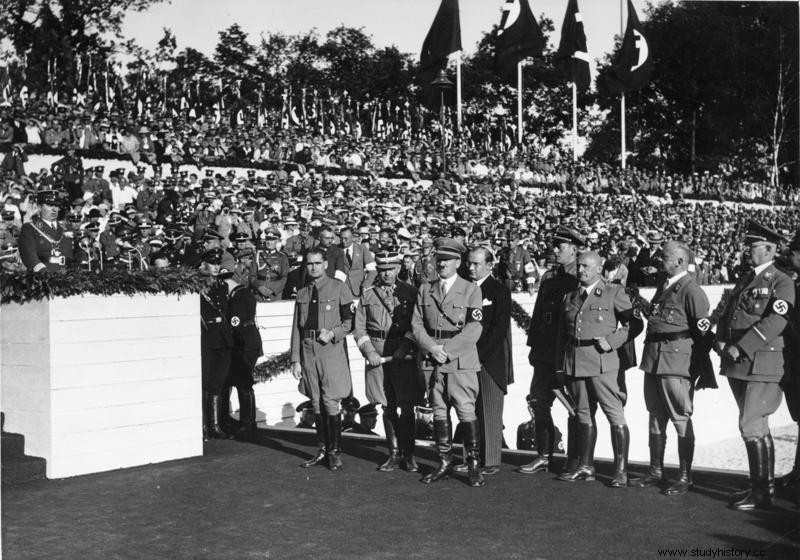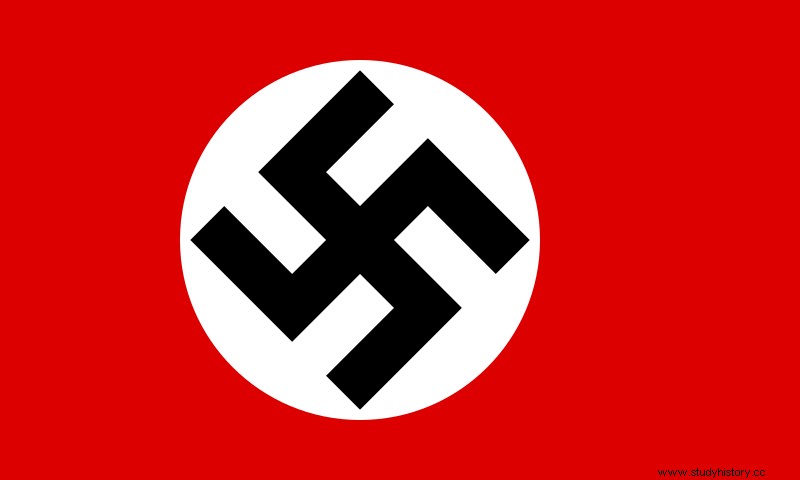In 1933, Hitler came to power in Germany. From this year, boycotts of Jewish shops are organized. Later, Jews were banned from public office by the Civil Service Restoration Law, since they were not considered Aryans. Other professions are affected such as doctors, artists and lawyers. Public places are forbidden to them (libraries and cinemas for example). The Hitler Youth extolled this anti-Semitism that ended in daily pogroms.
September 15, 1935

Characters
Adolf Hitler
Procedure
The Nuremberg Laws are not just for Jews. Article 1 st concerns the flag of the Reich, of which it specifies the colors, which are black, white and red. Article 2 establishes as an emblem on the flag the Swastika.
 Flag of III
e
Reich
Flag of III
e
Reich
The second law concerns German citizenship, which is granted to people of German blood, or relatives of Germany (this refers to all Germanic populations), who by their behavior show loyalty to the German people. These citizens are the only ones with political rights in the Reich.
The third law concerns the protection of German blood and honor. This law mainly concerns Jews:they are prohibited from marriage and extramarital relations with German citizens (or relatives), from having domestic workers under the age of 45. They are forbidden to display the flag of the Reich. In addition, they must show that they are Jewish.
Consequences
These laws made life more difficult for Jews in the Reich, forbidding them even more things and officially targeting them as enemies of the regime.
These laws pose several problems on their interpretation, which is quite vague on German citizenship and its conditions of access. Many contentious cases were brought to light (Aryan families including a person who converted to Judaism, people who converted to Christianity, despite a Jewish education…).
